Gun owners often form pretty strong attachments to their firearms. When you spend years toting a sidearm on your hip or carrying a rifle through the woods, it’s virtually impossible not to develop warmhearted feelings about those tools and constant companions. Because gun guys and gals care about their firearms, it’s only natural that they sometimes wonder, and maybe worry, about what would happen to their prized possessions if things get hairy one day and the law gets involved for one reason or another.
While guns are used to commit crimes every day, the vast majority of America’s firearms spend their days safely and legally tucked in gun safes, holsters, and cases. Thankfully, most gun owners will never have to go through the pain and anxiety of losing their firearms or having them stolen or confiscated.
“The Tucson Police Department has over 700,000 pieces of evidence, including many zip-tied firearms, loaded in three high-security evidence vaults.”
Sometimes, even the firearms of the most careful, law-abiding gun owners end up in police custody. Aside from guns found at crime scenes and on suspected criminals, law enforcement officers are likely to confiscate a gun if it, for example, is used in self-defense or found at the scene of a car accident, plus there are a few other reasons for gun seizures.
But what the hell happens to a favorite pistol, shotgun, or rifle once it ends up in police custody? What happens to your grandad’s lever gun if it happened to be in a pelican case in the truck bed when you got hit by somebody running a red light.
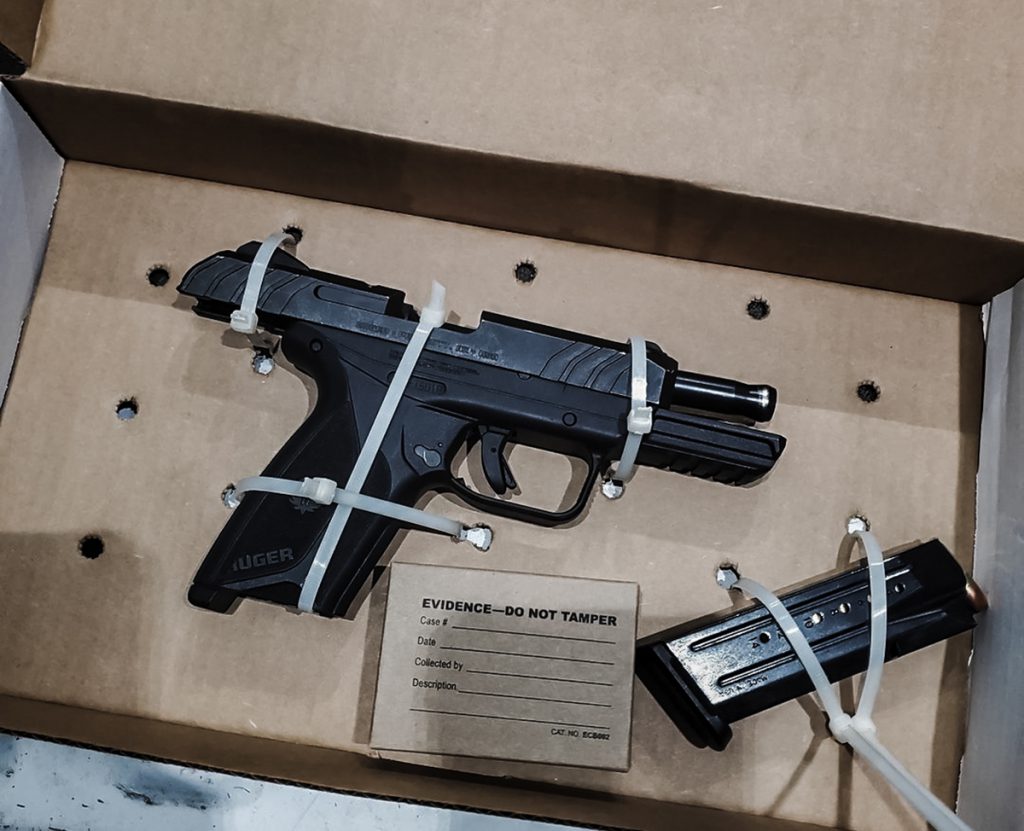
The Journey After Gun Seizures
Exactly what happens to a firearm that one way or another winds up in the hands of law enforcement is anything but cut and dry. The specifics vary by state and the circumstances surrounding how that firearm got fitted with zip ties and a PD tag. The handling process can even have minor variances between local departments within each state.
In Philadelphia, evidence firearms head to the city’s Forensic Science Center. Although the center is housed in a quaint 1920s art deco building, it features a leading-edge forensics lab. Upon arrival at the facility, officers catalog a firearm, assign it a unique barcode, and enter it into a digital database.
Within 48 hours, the firearm receives a thorough examination from the Firearms Identification Unit, including a test fire and ballistics evaluation. That data is entered into the National Integrated Ballistic Information Network, which is maintained by the Bureau of Alcohol, Tobacco, Firearms and Explosives (ATF), and the examiner checks the network for potential crime links to the firearm.
“This process allows the PPD to more quickly identify related shootings or shooting trends,” explained Michael Garvey, the director of Forensic Science at the Philadelphia Police Department.
The gun is then shuffled to a basement storage room that contains hundreds of manila envelopes filled with spent casings, firearms, and other evidence. The envelopes are packed like sardines on multiple double-sided shelves where they wait for their day in court or until a disposition is filed.
Philadelphia’s evidence storage room isn’t all that different from other evidence storage rooms across the country. The Tucson Police Department has over 700,000 pieces of evidence, including many zip-tied firearms, loaded in three high-security evidence vaults.
A firearm taken as evidence by police in Tucson remains in storage until requested by a detective for further analysis or an attorney for use as evidence in a courtroom.
“It gets stored in evidence until a detective or county attorney, prosecutor, requests that the evidence be analyzed by a crime lab and they will request it from evidence and it gets transported to them,” Arnaud said.
After the firearm is presented in court, it returns to a cold evidence storage locker, where it can sit for months or even years until the case is closed.
RECOVERING A CONFISCATED FIREARM
After Red Flag Law Gun Seizures
Nineteen states and the District of Columbia have some form of gun violence restraining orders on the books. Commonly referred to as “red flag laws”, GVROs allow family members and dating partners (and, in some states, neighbors, co-workers, and friends) to petition the court to seize a person’s firearms.
The spirit of these controversial laws is to temporarily remove firearms from a person who is a danger to themselves or others. However, petitions often rush through the courts without providing an opportunity for the subject to defend himself or herself. Many victims of GVROs have no knowledge of the petition until law enforcement arrives to take their guns. For these reasons, many gun rights groups have questioned the way these laws circumvent due process, and therefore, the Constitution.
As one might expect, recovering firearms appropriated due to a red flag order can be a complicated process. In most states, GVROs are time-limited orders, but police don’t just ring a subject’s doorbell and hand them their guns after an order expires.
In California, there are many hoops red-flagged gun owners must hop through to be reunited with their firearms. First, the subject of the GVRO must petition the court for firearms restoration. If a judge grants his or her request, the subject still has to pass a probing background check. The process is similar in Maryland.
However, red flag laws in many states do not explicitly address how firearms are to be restored to the owner after a GVRO expires. Often owners must beg the local police department for their legal property. Copious amounts of paperwork and background checks are not uncommon.
Recovering a Stolen Firearm
In a 2016 survey of prison inmates conducted by the Department of Justice, more than half of convicts who used a firearm in the course of a crime had stolen it, “found it,” or purchased it off the street — which means it was likely stolen.
A large number of guns used for criminal activity originate with legal, everyday gun owners. If a favorite firearm is stolen and then used for nefarious, illegal activity, reuniting with that firearm, whether it is an EDC Glock or Grandpa’s Winchester ‘94, getting it back can be a tricky affair or near impossible.
One of the biggest mistakes gun owners make is not keeping a record of their firearms. If guns are stolen, knowing their make, model, and serial numbers is crucial to finding them.
If the victim of gun theft doesn’t have a record of the stolen gun’s serial numbers, all is not necessarily lost. Sometimes recovering the serial number is a matter of a simple visit to the FFL that sold the firearm. Because dealers are legally obligated to maintain records of sales, they should be able to track down the serial numbers of any firearms purchased through them.
Even though criminals often grind or file down the serial numbers of firearms they’ve stolen, scientists can use modern forensic technology and chemical techniques to restore them, allowing law enforcement to trace stolen firearms back to their rightful owners.
It is crucial to report stolen or missing guns to law enforcement as soon as possible. Once a report is filed, police will enter the gun’s serial number into a database, which allows them to track recovered firearms that match back to the original owner. Victims should also follow up with law enforcement annually to check on the status of their missing guns.
Although being reunited with your stolen firearm should be a fairly easy process, social media is fraught with horror stories of gun owners who never recovered their purloined property, even after law enforcement had recovered their guns.
Some who have had their stolen guns returned found them much worse for the ordeal. One Reddit user described how he waited for his reunion with a stolen pistol for a year and a half because the property room was closed due to the pandemic. Once back in his hands, it was apparent his sidearm had a hell of a story to tell.
“All I know is that the gun was in really terrible shape, that it had been fired, and that there was a lot of cocaine on it,” the user explained. “I asked the officer if you could tell me where he got it. He said, ‘I cannot give you that information, but it was not used directly in a crime. If you were thinking about it being somewhere like a crack house in the West End, you probably would not be wrong.’”
UNCLAIMED FIREARMS
What happens to guns whose owners don’t come for them?
In North Carolina, for firearms that were not seized as evidence, but remain unclaimed for more than 180 days, law enforcement is required to “publish at least one notice in a newspaper published in the county in which the agency is located.” The agency is then free to dispose of the firearm if it remains unclaimed for 30 days after the lost and found announcement.
Some unclaimed firearms are kept by law enforcement agencies for training purposes. If a firearm has historical value, it might go to a museum or historical society. However, large numbers of unclaimed or forfeited firearms are either destroyed or auctioned off to the highest bidder.
DESTROYING FIREARMS FROM GUN SEIZURES
Although a select few firearms make it back home to their rightful, legal owners, the vast majority of confiscated guns in cities like Chicago, Los Angeles, New York, and Philadelphia are shredded or melted down.
Philadelphia melts down between 3,000 to 6,000 firearms each year. Metal gun components are tossed into a giant metal cauldron and heated to 3,000 degrees. Once liquefied, the parts are made into bars of high-grade steel. As recycled steel, the demolished firearms can be turned into everything from motorcycles to modern art.
Police departments across the country destroy so many firearms each year that a whole new industry has emerged to service them. GunBusters, a chain headquartered in Missouri, is one such company. The company’s service provides a pick-up of firearms to be destroyed off-site, as well as a mobile “gun pulverizer” for on-site annihilation.
Since the company opened in 2013, GunBusters has destroyed over 100,000 firearms for over 350 law enforcement agencies across the country. GunBusters doesn’t charge law enforcement agencies for the service. Instead, the company makes its profits by selling salvaged firearms parts and scrap steel.
Local police departments aren’t the only ones destroying seized firearms. The federal government also has a history of ruining guns confiscated from suspected criminals. According to CNN Money, the Department of Justice reported that federal agencies melted, shredded, or dismantled over 90,000 firearms valued at $24 million between 2005 and 2015.
However, not all law enforcement departments can account for the weapons they claim to have destroyed.
A formal audit of the Baltimore Police Department’s Evidence Management Unit by the Office of Legislative Audits (released on Nov. 30, 2021) found that 58% of firearms slated for destruction lacked witness approvals and proper documentation. There is no way to confirm whether the guns made it to the crucible.
Most of the time, guns used in infamous crimes are destroyed, but that depends on how famous the incident is. The Carcano Model 38 rifle Lee Harvey Oswald used to assassinate President John F. Kennedy was kept in federal custody for decades as it was periodically tested and examined over the years.
Oswald famously ordered the rifle and the Smith & Wesson Victory Model .38 Special revolver he carried on Nov. 22, 1963, through the mail. Toda, the rifle, and pistol are both kept in a secure location within the National Archives and Records Administration Building in College Park, Maryland.
There is a replica of the rifle on display at the Sixth Floor Museum in Dallas by the stairs in the book depository building where police found the real rifle after Kennedy was shot.
But sometimes, an infamous firearm ends up for sale. The Kel-Tec PF9 George Zimmerman used to shoot and kill 17-year-old Trayvon Martin in Sanford, Florida, in 2012 controversially sold for $250,000 in 2016. A brand new PF9 has a suggested retail price of just $358.
PUBLIC GUN AUCTIONS
Several states, including Arizona, Montana, North Carolina, West Virginia, and Kentucky have laws prohibiting police from destroying forfeited or unclaimed firearms, which should help assuage gun owners’ fears of what could happen to their favorite guns if they end up as evidence.
“Police destruction of firearms is unnecessary and wasteful,” said NRA spokeswoman Catherine Mortensen. “There is no reason any police department can’t resell those firearms to law-abiding citizens and use the money for any number of things – infrastructure, law enforcement training, equipment, etc.”
The Kentucky State Police manages auctions of forfeited firearms in the Bluegrass State. Only federally licensed firearms dealers (FFL holders) can bid in the auctions, which feature lots comprised of several hundred firearms: both handguns and long guns. A single auction held in December 2021 brought in $109,100. The revenue is used to purchase body armor and other equipment to enable law enforcement officers to better serve the citizens of Kentucky.
READ NEXT – Half of U.S. Now Has Constitutional Carry, Gun Debate Still Rages

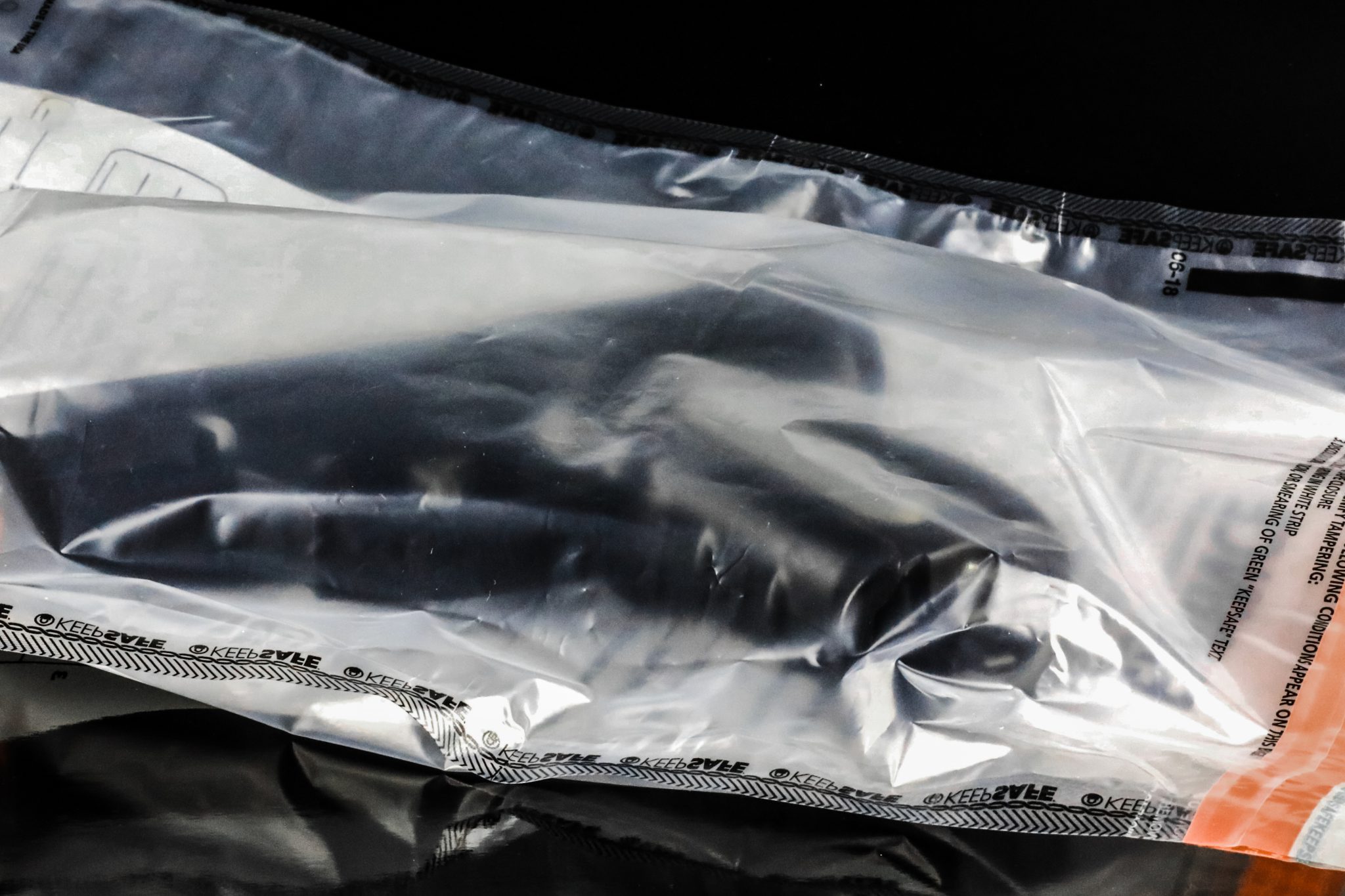

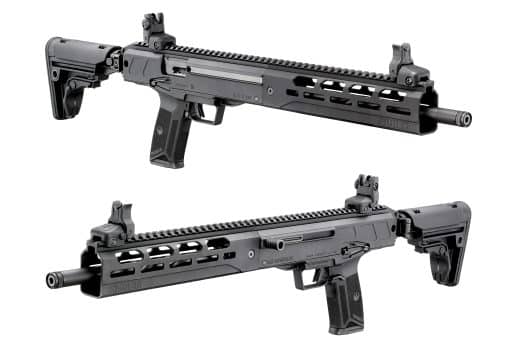
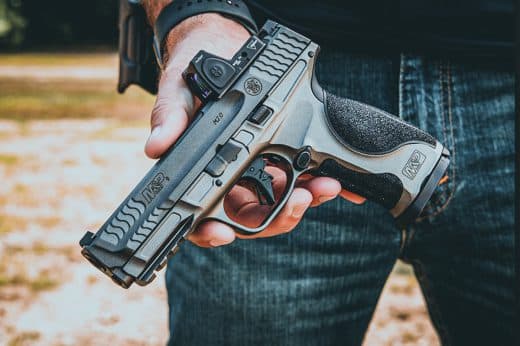
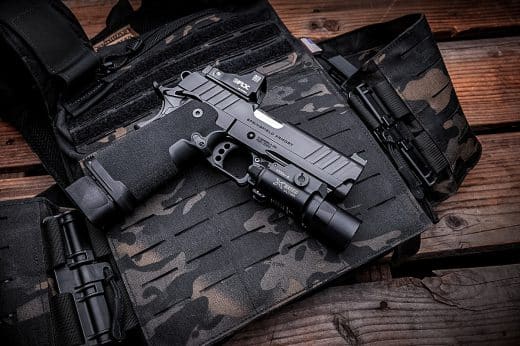


Comments